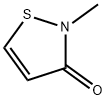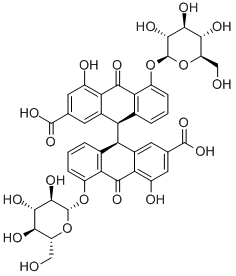
产品详情;
CasNo: 2682-20-4
分子式: C4H5NOS
外观: colourless liquid
交货时间: In stock
生产能力: 10000|Gram|Day
技术指标: 99%
| Description |
Methylisothiazolinone (also called 2-methyl-4-isothiazolin-3-one), is a powerful synthetic biocide and preservative within the group of isothiazolinones. Methylisothiazolinone is used to control slime-forming bacteria, fungi, and algae in pulp/paper mills, cooling water systems, oil field operations, industrial process waters, and air washer systems. And it is incorporated into adhesives, coatings, fuels, metal working fluids, resin emulsions, paints, and various other specialty industrial products as a preservative. It is also used to control the growth of mold, mildew, and sapstain on wood products. It is generally recommended for use only in rinse-off and leave-on cosmetic products (maximum concentration of 100 ppm) as preservative such as shampoo, conditioner, hair color, body wash, lotion, sunscreen, mascara, shaving cream, baby lotion, baby shampoo, hairspray, makeup remover, liquid soaps, and detergents. Nevertheless, methylisothiazolinone is allergenic. It is reported that methylisothiazolinone in rinse-off products causes allergic contact dermatitis. |
| Uses | Methylisothiazolinone, or MIT as it is sometimes known, is a preservative used in cosmetics and beauty products. It is a powerful biocide, or “chemical substance capable of killing living organisms, usually in a selective way.”Biocides are a general term that includes antimicrobial, germicide, antibiotic, and antifungal. Ultimately, Methylisothiazolinone is used to prevent a wide variety of bacteria and fungi from growing in cosmetics and beauty products, most often in shampoo. It is only approved for use in rinse-off formulas and at low concentrations. |
| Safety | Methylisothiazolinone (MIT) is a heterocyclic organic compound used as a preservative in cosmetics and personal care products in concentrations up to 0.01%. MIT is a colorless, clear liquid with a mild odor that is completely soluble in water; mostly soluble in acetonitrile, methanol, and hexane; and slightly soluble in xylene. Consistent with its solubility, dermal penetration is low. The Cosmetic Ingredient Review Expert Panel noted the in vitro evidence of neurotoxicity but concluded that the absence of any neurotoxicity findings in the many in vivo studies, including subchronic, chronic, and reproductive and developmental animal studies, suggests that MIT would not be neurotoxic as used in cosmetics. Although recognizing that MIT was a sensitizer in both animal and human studies, the panel concluded that there is a threshold dose response and that cosmetic products formulated to contain concentrations of MIT at 100 ppm (0.0 1%) or less would not be expected to pose a sensitization risk. Accordingly, MIT may be safely used as a preservative in cosmetics up to that concentration. |
| References |
[1] http://www.safecosmetics.org/get-the-facts/chemicals-of-concern/methylisothiazolinone/ [2] K. Yazar, M. D. Lundov, A. Faurschou, M. Matura, A. Boman, J. D. Johansen, C. Lidén (2015) Methylisothiazolinone in rinse-off products causes allergic contact dermatitis: a repeated open-application study, 173, 115-122 [3] https://www3.epa.gov/pesticides/chem_search/reg_actions/reregistration/fs_G-58_1-Oct-98.pdf |
| Chemical Properties | Yellow Low melting Solid |
| Uses | 2-Methyl-4-isothiazolin-3-one is a isothiazolinone based biocide and preservative used in personal care products. 2-Methyl-4-isothiazolin-3-one is also used for controlling microbial growth in water-c ontaining solution. |
| Uses | A potent biocide useful for controlling microbial growth |
| Uses | methylisothiazolinone is a preservative. |
| Definition | ChEBI: A 1,2-thazole that is 4-isothiazolin-3-one bearing a methyl group on the nitrogen atom. It is a powerful biocide and preservative and is the minor active ingredient in the commercial product KathonTM. |
| Contact allergens | MI is generally associated with MCI, in Kathon CG, MCI/MI, and Euxyl K 100. This preservative is currently used in water-based products such as cosmetics, paints, and glues. Skin contact with concentrated solution can cause severe irritant dermatitis. |
相关产品
-
2-氨基-1,4-苯二磺酸一钠
CAS:24605-36-5
-
番泻苷 A
CAS:81-27-6
-
(alphaR)-alpha-甲基-3,5-二(三氟甲基)-苯甲醇乙酸酯
CAS:534613-13-3





